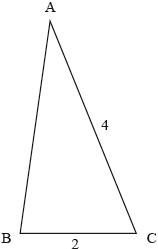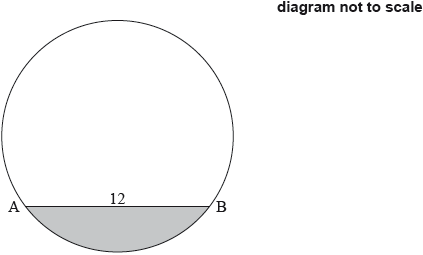| Date | November 2021 | Marks available | 6 | Reference code | 21N.1.AHL.TZ0.11 |
| Level | Additional Higher Level | Paper | Paper 1 | Time zone | Time zone 0 |
| Command term | Find | Question number | 11 | Adapted from | N/A |
Question
The following diagram shows a corner of a field bounded by two walls defined by lines and . The walls meet at a point , making an angle of .
Farmer Nate has of fencing to make a triangular enclosure for his sheep. One end of the fence is positioned at a point on , from . The other end of the fence will be positioned at some point on , as shown on the diagram.
He wants the enclosure to take up as little of the current field as possible.
Find the minimum possible area of the triangular enclosure .
Markscheme
METHOD 1
attempt to find using cosine rule M1
(A1)
attempt to solve a quadratic equation (M1)
AND (A1)
Note: At least must be seen, or implied by subsequent working.
minimum area M1
Note: Do not award M1 if incorrect value for minimizing the area has been chosen.
A1
METHOD 2
attempt to find using the sine Rule M1
(A1)
OR (A1)
EITHER
(A1)
area M1
OR
sine rule or cosine rule to find (A1)
minimum area M1
THEN
A1
Note: Award A0M1A0 if the wrong length or the wrong angle selected but used correctly finding a value of for the area.
[6 marks]
Examiners report
As has often been the case in the past, trigonometry is a topic that is poorly understood and candidates are poorly prepared for. Approaches to this question required the use of the cosine or sine rules. Some candidates tried to use right-angled trigonometry instead. A minority of candidates used the cosine rule approach and were more likely to be successful, navigating the roots of the quadratic equation formed. When using the sine rule the method involved the ambiguous case as the required angle was obtuse. Few candidates realized this and this was the most common mistake. In a few instances, the word “minimum” led candidates to attempt an approach using calculus.



